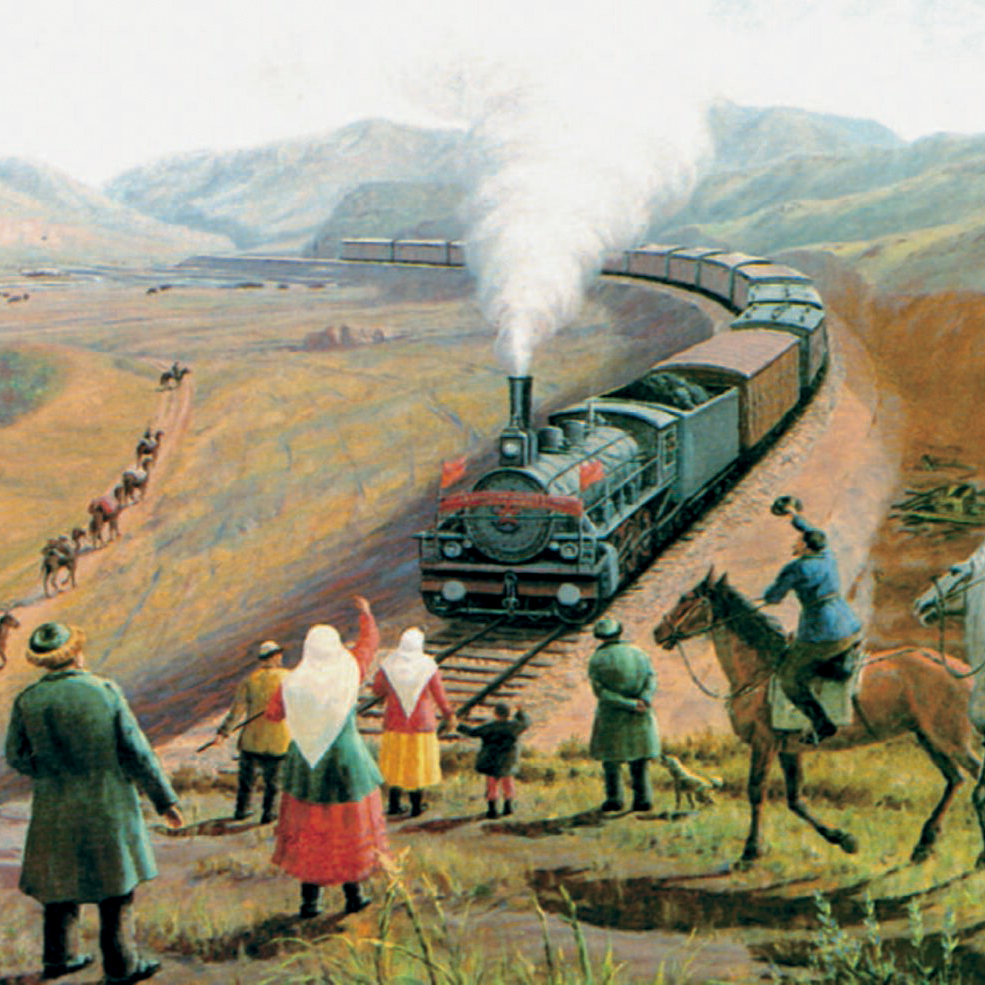ON THE INDUSTRIAL HISTORY OF KAZAKHSTAN
Geographically, only a small part of the country lies in Europe. The larger part lies in Asia: according to the current view, the continental border runs from the mountains of the Urals through western Kazakhstan along the Ural River to the Caspian Sea. Historically, the nomadic country, in whose soils lie an abundance of raw materials, was defined by the Tsars and the Soviets.
Kazakhstan came under Russian rule around the middle of the 18th century and then served primarily as a supplier of raw materials and a sales market for Russia’s first industrial plants. The modest beginnings of the large industrial districts were in the middle of the 19th century: the mining of coal and a small copper smelter near Karaganda, and coal mining in Ekibastuz. In 1899, a Russian company drilled the first oil well, and from 1908, with the help of foreign investors, the "black gold" was extracted on a large scale between the Ural and Emba rivers.
Russia also became involved in railway construction - not least for strategic reasons: from 1904, trains of the Trans-Siberian Railway rolled through Kazakhstan, from 1906 the Trans-Aral Railway from Orenburg to Tashkent crossed the south-west of the country, and in 1915 the Altai Railway followed in the east. But then the First World War, the Russian Civil War and a famine led to a catastrophe from which the country only recovered very slowly.
From 1920, Kazakhstan belonged to the Soviet Union, whose government began to systematically develop the mineral resources as part of its industrialisation policy. It expanded the production facilities for coal, copper and iron, intensified the extraction of gold and lead and founded new industrial centres such as the city of Shesqasghan. From 1931, the "Turk-Sib Railway" connected the most important cities in the south and east of the country. In Almaty (then Alma-Ata), the capital since 1929, the population grew and new food processing and light industry enterprises were established.
During the Second World War, industry grew because Moscow moved factories from contested western territories to Kazakhstan. Factories for mechanical engineering were built in Almaty, an oil refinery in Atyrau (then Gurjew), which is still in operation today, and a large steelworks in Temirtau near Karaganda.
In 1949, the Soviet Union detonated its first atomic bomb at the test site in Semei (then Semipalatinsk). The facilities remained in operation until 1991, leaving radioactive contamination in the surrounding area. The USSR's next major prestige project was also located in Kazakhstan: In Baikonur (then Leninsk), not far from the Caspian Sea, the "Cosmodrome" was built from 1955 onwards, from which the Soviet space missions took off. Today, the facilities are leased to Russia and are used internationally for manned flights into space.
The Soviet government also invested massively in heavy industry - but as was so often the case, at the expense of the light and food industries, so that Kazakhstan had to import finished goods largely from the Soviet Union. Due to its wealth of resources, the country became one of the largest energy producers in the socialist federation: More coal mines were built, especially the huge open-cast coal mine in Ekibastuz, natural gas production was expanded, and oil wells sprang up, especially on the Mangishlak peninsula on the Caspian Sea.
In the 1960s, industrial activity diversified: Besides iron and copper, ores such as titanium, manganese and magnesium were increasingly used, and an important aluminium smelter was built in Pavlodar. Chemical plants were concentrated in the south of the country with centres in Shimkent and Taras (then Dzhambul), where phosphate deposits were used for fertiliser production. The opening of a large tractor factory in Pavlodar testifies to the burgeoning mechanical engineering sector. Another important sector was arms production for the Red Army, which included machine guns as well as electronic controls and biological weapons.
At the beginning of the 1970s, industry was probably the dominant feature in the Kazakh economy. In 1991, the country became independent. Soon after, Russian demand collapsed and the weaknesses of the one-sided development became painfully apparent: despite the highly developed processing and manufacturing plants, the gross domestic product declined drastically; today, energy-rich Kazakhstan even has to import electric power.
Kazakhstan was a union republic of the 'Union of Soviet Socialist Republics (USSR)', which was dissoluted in 1991.
Therefore, for completeness, also read our articles on the industrial history of the other former soviet republics
Armenia
Azerbaijan
Belarus
Estonia
Georgia
Latvia
Lithuania
Moldova
Russia
Ukraine


